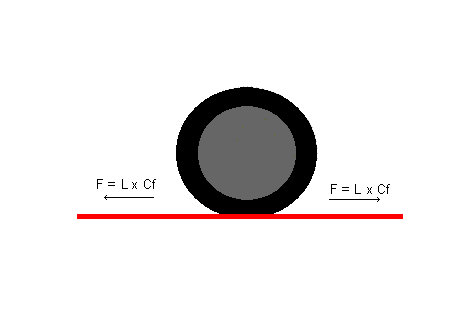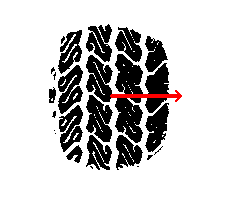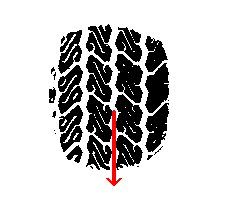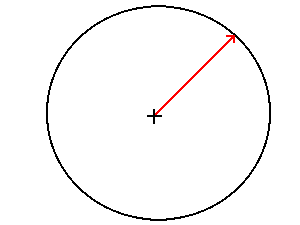
The friction circle concept was made popular in the 60s and it is still important today as a diagnostic tool. This tool can be used with any type of car (or truck) to graphically represent traction capacity or help identify why your car has lost traction.
If you are a race driver, the friction circle theory can help you understand the traction limits of your race car. If you are the crew chief or set-up man, the friction circle theory can help you understand what items need to be adjusted on the race car.
Background Science
The maximum traction that a tire generates can be described by the simple equation
F = L x Cf (where F is the traction force, L is the load or weight on the tire and Cf is the coefficient of friction for the rubber on the ground surface).

The illustration above shows the traction force to the front or rear; however, the traction force can be generated to the side or any other direction in the horizontal plane. Because the tire can develop the force in any direction on the horizontal plane, it provides the basis for the friction circle theory.
Another View
Rather than looking at the traction force from the side view of the tire,
the friction circle looks at the traction force at the contact patch. The
illustration below shows a force arrow to the right indicating that the
traction force is being used to resist lateral motion.

If all of the available traction were to be used in the rearward direction, as during acceleration, then the traction force arrow would be pointing to the rear as seen below.

Because the tire's traction force can be in any direction, the force arrow can also point in any direction. So now imagine the force arrow was to sweep 360 degrees, like the hands on a clock. The limit of the arrow would then describe a circle (see example below).

This is the basis of the friction circle theory. The circle is simply a graphic means of illustrating that the tire's maximum traction can be developed in any direction.
Basic Application Of The Theory
Now, imagine that you are driving your car in a straight line and you slam on the brakes to the point that the wheels almost lock up. The tires are now at the limit of their traction and the arrow on the friction circle would be pointing to the front and
at the limit of the circle.
If you try to turn the steering wheel in this condition, the tires will start to slide because there is no lateral force available. However, if less brake was applied so that the force arrow did not reach the limit of the circle, then some traction force would be available for turning (see example below).

As long as the combination of forces (braking and turning or acceleration and turning) create a resulting force that is inside the friction circle, then the tire will have traction. If the resulting force tries to exceed the friction circle, then the tire will break traction and start to slide.